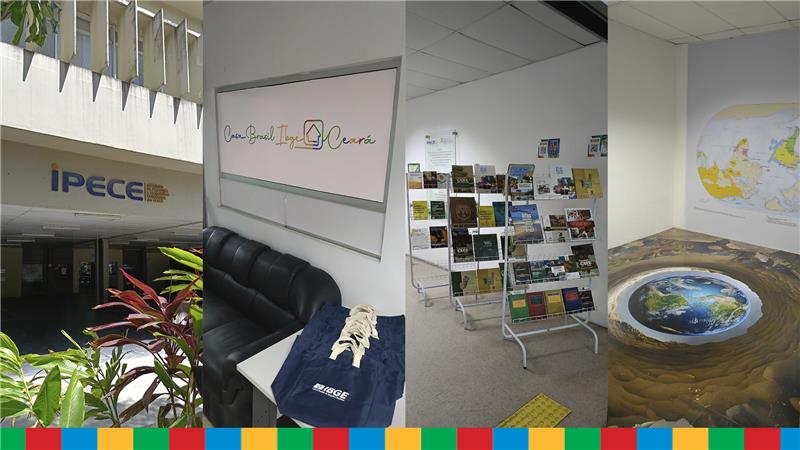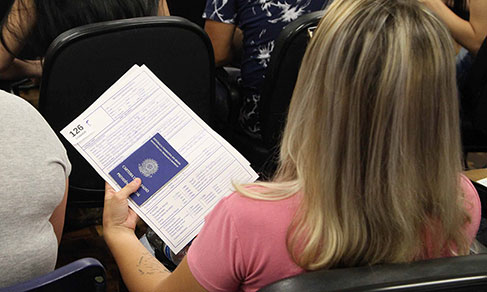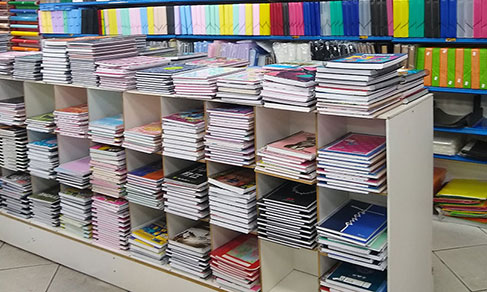Monthly Survey of Trade
Retail sales change by -0.1% in December and close 2024 at 4.7%, biggest increase since 2012
February 13, 2025 09h00 AM | Last Updated: February 17, 2025 01h53 AM

Retail trade sales closed 2024 with an increase of 4.7%, the biggest increase since 2012 (8.4%). In December 2024, against November, trade sales in the countrt recorded a negative change of 0.1%, a result considered stable. the quarterly moving average recorded a null change (0.0%) in the quarter ended December. Data come from the Monthly Survey of Trade (PMC), released today (13) by the IBGE.
The expansion registered last year caused the series of fixed base index with seasonal adjustment to reach new successive record levels, which had not taken place since 2020, having reached the maximum level in October.
“An important aspect about trade from the annual perspective is that, in terms of marginal results, there were two months of stability (November and December). However, it is worth mentioning that this stability supports a record level reached in October 2024, that is, stability with high results,” says the manager of the survey, Cristiano Santos.
As for extended retail trade, which includes, besides retail, the activities of Vehicles, motorcycles, parts and pieces, Construction material and Wholesale of food products, beverages and tobacco, volume of sales in December dropped 1.1% against the immediately previous month, after a decrease of 1.4% in November. As a result, 2024 ended with a cumulative increase of 4.1%, the biggest since 2021, when it was 4.5%.
Eight of the eleven activities surveyed, of extended retail trade, closed the year with a positive figure: Pharmaceuticals, medical and orthopedic articles and toiletries (14.2%), Vehicles and motorcycles, parts and pieces (7.1%), Construction material (4.7%), Hyper and supermarkets, food products, beverages and tobacco (4.6%), Furniture and household appliances (4.2%), Fabric, wearing apparel and footwear (2.8%) an Office, computer and communication material and equipment (0.7%).
“In sectoral terms, a highlight was the pharmaceutical sector, which is the only activity to hold eight years of continuous increase. In this case, both subsectors increased in 2024: both pharmaceuticals and toiletries and cosmetics. The sector of other personal and household articles, which encompasses department stores, sports material, among others, also had a positive performance. Differently, from what took place in pharmaceuticals, which had a strong performance in previous years, this sector is recovering from two years of drop, mainly due to accounting issues in some department stores that occurred since the end of 2022, and remained throughout 2023,” says Cristiano.
In terms of negative results, the three activities that recorded decreases in 2024 were Fuels and lubricants (-1.5%), Wholesale trade of food products, beverages and tobacco (-7.1%) and Books, newspapers, magazines and stationery (-7.7%).
“The segment of Books, newspapers, magazines and stationery has had cumulative decreases for some years, with the latest increase in 2022. That is related to the increasing digitization process of its products. What has supported this activity is the textbook. In the case of Wholesale trade of food products, beverages and tobacco, it was a year focused on the distribution of cereals and legumes, in a very competitive market. The sector of Fuels and lubricants is linked to the demand of transportation, which was not so significant in 2024,” the manager observes.
Five sectors stood negative from November
The negative change (-0.1%) from November to December 2024 takes place after a change of -0.2% registered in November. Five of the eight sectors surveyed recorded negative results in retail: Office, computer and communication material and equipment (-5.0%), Pharmaceuticals, medical and orthopedic articles and toiletries (-3.3%). Fuels and lubricants (-3.1%), Textiles, wearing apparel and footwear (-1.7%) and Hyper and supermarkets, food products, beverages and tobacco (-0.4%).
Only three of the eight groups surveyed did not record any negative changes: Other personal and household articles (0.6%), Furniture and household appliances (0.7%) and Books, newspaper, magazines and stationery (0.8%). In extended retail, Vehicles and motorcycles, parts and pieces and Construction material: -0.8% and -2.8%, respectively.
Sales increased 2.0% from December 2023
Against December 2023, the volume of retail sales increased 2.0% in the same month of 2024, 19th consecutive increase with positive results in this indicator, with positive results in four activities: Furniture and household appliances (10.2%), Other personal and household articles (9.7%), Pharmaceuticals, medical and orthopedic articles and toiletries (9.6%) and Fabric, wearing apparel and footwear (3.4%).
The following activities recorded negative results: Hyper and supermarkets, food products, beverages and tobacco (-0.8%), Fuels and lubricants (-1.7%), offica, computer and communication material and equipment (-2.2%) and Books, newspapers, magazines and stationery (-3.9%).
As for extended retail trade, Vehicles and motorcycles, parts and pieces incresed by 6.8%, Construction material increased 2.0% and Wholesale trade of food products, beverages and tobacco dropped 8.1%.
From November, 20 Federation Units recorded decrease in sales
From November to December, retail trade sales dropped in 20 of the 27 Federation Units, with a highlight to Amapá (-9.3%), Espírito Santo (-6.2%) and Roraima (-5.5%). On the other hand, with negative results there were seven states, among which the Federal District (4.5%), Rio de Janeiro (2.9%) and Pernambuco (1.4%) stand out.
As for extended retail trade, the change in this indicator recorded negative results in 19 of the 27 Federation Units, with a highlight to Amapá (-12.6%), Mato Grosso (-6.5%) and Espírito Santo (-4.7%). On the contrary, eight states recorded positive results, where Federal District (3.1%), Bahia (1.9%) and Sergipe (1.7%).
More about the survey
PMC produces indicators to monitor the short-term behavior of retail trade in Brazil, investigating the gross revenue of formal enterprises with 20 or more employed persons and whose major activity is retail trade. Having started in 1995, the PMC brings monthly results of changes in sales volume and nominal revenue for retail trade and extended retail trade (cars and construction material) for Brazil and Federation Units. Results can be accessed on Sidra. The next PMC release, with the results for January 2024, will be on March 14.




















